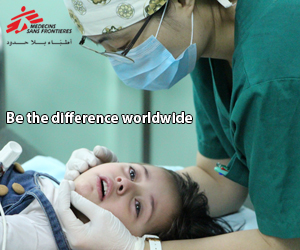Latest NEWS
- Aswat Masriya, the last word
- Roundup of Egypt's press headlines on March 15, 2017
- Roundup of Egypt's press headlines on March 14, 2017
- Former Egyptian President Hosni Mubarak to be released: lawyer
- Roundup of Egypt's press headlines on March 13, 2017
- Egypt's capital set to grow by half a million in 2017
- Egypt's wheat reserves to double with start of harvest -supply min
- Roundup of Egypt's press headlines on March 12, 2017
'Agricultural market is unable to absorb' workers available in Egypt – World Bank report

Harvest season on the outskirts of Cairo - Mohamed AbdelGhany/Reuters
By Hend Kortam
CAIRO, Oct 13 (Aswat Masriya) – The land available for work in places like Egypt, India and Southeast Asia "remains relatively scarce," a World Bank report on global youth unemployment said on Tuesday.
Globally, "youth account for roughly 40 percent of the world’s unemployed and are up to four times as likely to be unemployed as adults," said the report.
This comes at a time when the world has its "largest youth generation" ever, with 1.8 billion youth. A third of them, 621 million, can be considered "not in employment, education or training," the report said.
Titled "Towards Solutions for Youth Employment," the document was authored by a coalition of global organisations like the World Bank, the International Labour Organization and the International Youth Foundation.
Egypt’s unemployment rate, as of the second quarter of 2015 is 12.7, the state's statistics agency announced in August. This was a drop from 12.8 reported in the first quarter of the year and meant that 3.5 million of Egypt's 27.8 million on the workforce were unemployed between April and June.
More than two thirds of Egypt's 89.6 million people are below the age of 30 and up to 65 percent of those unemployed in Egypt are between the ages of 15 to 29.
Among the multiple factors causing youth unemployment across the world, the 169-page report said, is, "land scarcity and weak or lacking land rights are hindering youth from engaging in agriculture."
The report shows that Egypt is one of those countries where the agricultural "market is unable to absorb the number of available workers." More than a quarter of Egypt’s labour force works in the agricultural sector.
There are several programmes that are attempting to tackle the "land-constraint issue among youth."
One example cited by the report was a programme in Egypt called the West Noubaria Rural Development Project, created in 2003 "to help young farmers who had been dispossessed of their land and resettled onto small holdings…"
The project has brought farmers "flocking" to Upper Egypt’s fields for work opportunities, although it had previously been sparsely populated because of "seemingly infertile land," according to the report.
The programme has allowed farmers to export their products, has commercialised agricultural products in Upper Egypt and "given young farmers the opportunity to link with larger businesses."
It has also allowed farmers to be "embedded" in marketing associations in companies, marketing associations with larger companies, "providing them with further training opportunities, education on quality control, technology and crop processing, as well as access to supply contracts from exporters and processing companies," the report stated.
Yet, the challenges ahead for youth unemployment across the world are "enormous" and over the next decade, it is predicted that a billion more youth will enter the job market.
Of the current generation of youth, up to 85 percent live in lower-income and fragile states, the report states.
The Arab Spring and youth-led uprisings elsewhere "… demand that we explore the links between economic participation, inequality, and community security, crime, and national fragility through a lens focused on youth," it said.
"What we see is a generation in economic crisis."
Regionally, Tunisia’s youth unemployment rate stood at 31.2%, which is double the national rate. The North African country’s duration of unemployment was a point of concern in the report because a fifth of youth have gone without a job for a year or two and more than 37 percent have not had a job for more than two years.
Egypt's western labour neighbor Libya, which is in conflict, has an even higher youth unemployment rate of 49 percent.
Youth were half as likely to be employed as someone chosen randomly from the general population in Libya but in 2010, their chances became even lower and the ratio became 2.5.
Meanwhile, hundreds of millions of people are moving away, either to seek better opportunities or to seek refuge from conflict or war.
"The youth jobs challenge in conflict-affected and fragile contexts is threefold: preparing youth for work, creating jobs, and boosting productivity of more informal activities in which youth are engaged," the report said.










